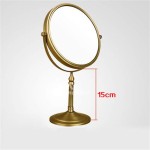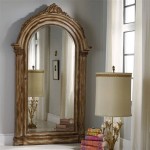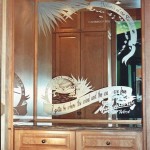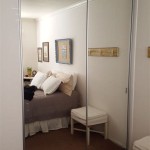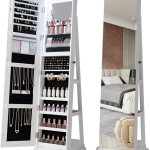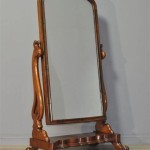Sliding Mirror Closet Door Wheels: A Comprehensive Guide
Sliding mirror closet doors offer a sleek, space-saving solution for bedroom storage. A key component ensuring smooth and silent operation of these doors is the sliding mechanism, specifically the wheels. Understanding the types, functionalities, and maintenance of these wheels can be crucial to preserving the longevity and performance of sliding closet doors.
Types of Sliding Mirror Closet Door Wheels
Sliding mirror closet door wheels are broadly categorized into two main types: top-mounted and bottom-mounted. Top-mounted systems suspend the door from a track running along the top of the closet frame. The weight of the door is supported by these top rollers, while bottom guides primarily prevent the door from swaying or derailing. Bottom-mounted systems, conversely, support the door's weight on rollers running along a track on the floor. Top guides in these systems mainly serve to stabilize the door and keep it aligned.
Within these two categories, there are further variations based on wheel material and design. Wheels can be made of plastic, nylon, or metal. Plastic wheels are generally more affordable but may wear down faster than metal or nylon options. Nylon wheels offer a good balance of durability and smooth operation, often chosen for their quiet performance. Metal wheels, typically steel or aluminum, are the most durable and long-lasting choice, capable of supporting heavier doors. However, they may produce more noise than nylon or plastic counterparts.
The design of the wheels also influences their effectiveness. Some wheels feature bearings to reduce friction and enhance smooth gliding. These bearings can be made of steel or ceramic. Ceramic bearings provide superior smoothness and longevity but come at a premium price compared to steel bearings.
Troubleshooting Common Issues with Sliding Mirror Closet Door Wheels
Several common issues can arise with sliding mirror closet door wheels, often manifesting as noisy operation, difficulty sliding, or doors coming off the track.
Noisy operation can indicate worn-out wheels, dirty tracks, or a lack of lubrication. Cleaning the tracks and lubricating the wheels can often resolve this issue. If the noise persists, the wheels may need replacement.
Difficulty sliding can stem from several factors: accumulated debris in the track, bent or damaged rollers, or a misaligned track. Cleaning the track and checking for any obstructions is the first step. If the problem persists, inspect the wheels for damage. Bent or broken wheels require replacement. A misaligned track might require adjustment or replacement.
Doors coming off the track often indicate a serious issue with the rollers, the track, or the door itself. The rollers may be completely worn out or broken. The track might be bent or damaged, preventing the rollers from engaging correctly. In some cases, the door itself may be damaged, hindering its movement along the track. Careful inspection of all components is necessary to identify the root cause and implement the appropriate solution.
Replacing Sliding Mirror Closet Door Wheels
Replacing sliding mirror closet door wheels is a relatively straightforward process that can often be accomplished with basic tools. Before beginning, identify the type and size of the wheels required for replacement. This information can usually be found stamped on the existing wheels or by consulting the manufacturer's documentation.
Start by carefully removing the door from the track. For top-mounted systems, this usually involves lifting the door slightly and pulling it out of the bottom track. For bottom-mounted systems, the door may need to be tilted and lifted out of the top track. Once the door is removed, access the wheels and their mounting hardware.
The method for removing the old wheels varies depending on the design. Some wheels are secured with screws, while others are clipped or pressed into place. Carefully remove the old wheels and install the new wheels using the same mounting method. Ensure the new wheels are securely fastened to prevent future issues. Once the new wheels are in place, carefully re-install the door onto the track, ensuring it slides smoothly and quietly.
Regular maintenance, including cleaning the tracks and lubricating the wheels, can significantly extend the lifespan of sliding mirror closet door wheels and ensure the smooth, quiet operation of the doors for years to come. Understanding the different types of wheels, troubleshooting common issues, and knowing how to replace them empowers homeowners to address problems effectively and maintain the functionality of their sliding closet doors.

Sliding Mirror Door Wheel And Mechanism Swisco Com

Prime Line 1 2 In Concave Nylon Ball Bearing Mirror Door Roller Assembly Charmac Doors N 6820 The Home Depot

Sliding Mirror Closet Door Rollers Replacement Hardware Fits Contractors Part W8

23 042 Mirrored Closet Door Roller Round Swisco Com

23 070 Mirror Wardrobe Door Roller Concave Swisco Com

Sliding Wardrobe Door Wheels

Furniture Hardware Cabinet Closet Wheels Sliding Door Roller Adjustable Mirror Wardrobe China Made In Com

Prime Line Mirror Door Roller Unique Housing 1 2 In Nylon Grooved N 6576 The Home Depot

23 222c Sliding Mirror Door Top Roller Guide Swisco Com

Sliding Mirror Closet Door Rollers Hardware Fits Contractors Part W

